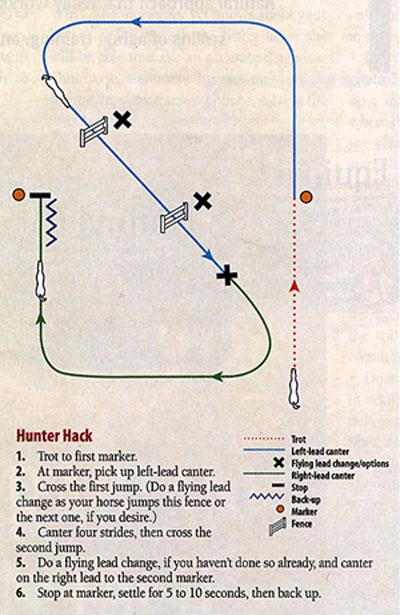
This class is the beginning of the over-fences classes. The purpose is to give horses an opportunity to show their expertise over low fences and on the flat.
The horse should move in the same style as a working hunter.
Judging
The class will be judged on these criteria:
- Even hunting pace
- Manners
- Way of going
- Jumping style
The class has two components:
- Fence work, which represents 70% of the score (scored the same as working hunter)
- Rail work, which represents 30% of the score
- Horses are shown at the rail at a walk, trot, and canter both ways of the ring with light contact (as mentioned in AQHA 2014 Rulebook).
Requirements
- Fence height is between 2 and 3 feet
- Two fences set either 36, 48, or 60 feet apart (increments of 12 feet), but no shorter than 36 feet
- There must be 3 to 5 strides between fences

Scoring
- Scored on a basis of 0 to 100
- Credited for:
- Even strides to the fence and on the rail
- Even cadence
- Attentive look
- Soft in the bridle
- Quality shape over the fences
- Easy way of going
Faults
- Being on the wrong lead and/or diagonal at the trot
- Excessive speed or slowness
- Breaking gait
- Failure to take gait when called
- Head carried too low or too high
- Nosing out or flexing behind the vertical
- Opening mouth excessively
- Stumbling
Penalties
- Penalties can range from ½, 1, 2, 3, 5, to 10-30 points
- The most severe result from:
- Hanging one leg down
- Use of whip
- Trading leads (after corner and more than two strides out)
- Leaving off one leg
- Trotting on course
- Failure to obtain lead through corners and end
- Refusal
- Bucking
Disqualification

- A total of three disobediences which can include:
- refusal
- stop
- run out
- extra circle
- Jumping an obstacle before it is reset
- Bolting from the arena
- Off course
- Deliberately addressing an obstacle


